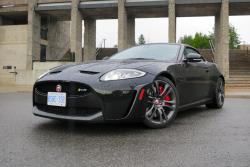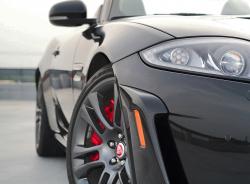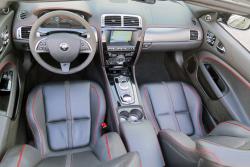Once upon a time, the name “Jaguar” would summon up visions of genteel British exclusivity – of tweed-clad squires, drawing rooms panelled with ancestral paintings, Meershaum pipes, and faithful hounds at foot on faded Aubusson rugs.
A rich legacy established by luxurious saloons, racetrack victories and sleek, sexy roadsters, had for decades made Jaguar a symbol of affluence for wealthy Brits. Sports cars like the E-type cemented Jaguar’s reputation for gorgeous design, and owners prized them for the elite, yet sensuous image they projected.
And yet, in the years leading up to the new millennium, Jaguar seemed to lose its focus and its vehicles had become frumpy and dated. A decade of ownership by Ford, with an estimated injection of $50 billion in funds, failed to revive the brand, and in 2008, it was purchased by Tata Motors. There’s a certain poetic irony in a company from India coming to the rescue of one of the British Empire’s most storied and venerable marques – and yet Jaguar has made a remarkable turnaround under their leadership. Both the XK coupe and XF saloon have been dazzling sales successes, and more importantly, have restored a sense of desirability to the Jaguar brand that has been lacking in recent years.
The F-Type Coupe lit up the automotive landscape with all the ferocity of a comet blazing across a summer night sky – banishing any lingering vestiges of frumpiness to some dark archival closet. While its styling cues have obviously been influenced by the iconic E-Type, the F-Type injects the brand with a fresh, new sexiness.
Unfortunately, the F-Type’s popularity has come at the expense of the XK, whose sales have tanked since the launch of the smaller, more flamboyant, and less expensive two-seater. While some claim that the XK is stale and dated by comparison, and the F-Type a more worthy successor, we disagree.
The new F-Type is indeed a stupendous new addition to the Jaguar lineup. But the brash little sports car fills a different niche than the lovely XK, which is at heart, a grand tourer.
My tester for one glorious week was a slinky topless XKR-S, a veritable black panther of a machine. Long and lithe, it’s no surprise that the XK was penned by designer Ian Callum – its resemblance to his achingly beautiful Aston Martin DB7 is unmistakable.
   2014 Jaguar XKR-S, dashboard. Click image to enlarge |
A beautiful, flowing, organic shape, the XK features aluminum skin stretched taut over fluid curves, and like its E-type ancestor features a long, elegant nose and abbreviated deck atop coiled haunches.
The XKR-S was top dog (or should that be top cat?) of the lineup until the recent addition of the XKR-S GT – an all-out, track-ready derivative boasting carbon-ceramic brakes and tweaked suspension components. This beefed-up version of the XK features several aerodynamic cues that set it apart from the ordinary XK.


















